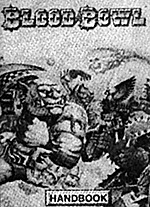
A3: Air Assault on the Aerie of the Slave Lords
by Rob Vaux
A sinister band of marauding slavers... a hidden city deep in the mountains... and a stalwart band of adventurers who are the only ones capable of penetrating its mysteries. This is the sort of adventure Dungeons and Dragons ™ was made for.
Assault on the Aerie of the Slave Lords is the third in a four module series originally presented as a tournament at Gen Con XIII in 1980. In the first two modules, the characters pursued and harried a vicious band of slavers from their urban outposts deep into the humanoid-infested Drachengrab mountains. Now, they have reached the center of the slaving operation --the ciry of Suderham, built on a lake in the middle of a dead volcano. Secure from armed attack by the natural defenses of the mountains, Suderham can only be reached through stealth and guile... and then only after bludgeoning yout way through the secret caverns that lead to it.
Like the two adventures hefore it, Assault contains a delightful combination of puzzles and combat to test your party. It also has a terrific setting in Suderham, a place where nothing is as it seems. And for the first time in the series, the party comes face to face with the Slave Lords themselves. In today's character-heavy role-playing market, it's fascinating to see how the charts-and-die-rolling system of D&D handles interactions with NPCs.
For the more technically oriented, the module includes tournamenr rules and ready-to-play characters in addition to the adventure itself. It also contains a scoring chart to see how well your party matches up with the original competitors. Regular readers may be asking themselves why we've taken up so much space detailing each module in the Slavers series. Next month, you'll find out why...

Blood Bowl
by David Williams
Blood Bowl is a delightful British import from Games Workshop, creators of thc most vicious wargames on the planet. Borrowing concepts from their Warhammer and Warhamrner 40k games, GW brought their patented mayhem to organized sports. Blood Bowl is only peripherally like American football --actually more like rugby. (Actually, the closest approximation today would be Aussie-rules football. Go Ravens!) If you rate a rugby match between Orcs and Humans, then add chainsaws, bribable refs, fans that occasionally storm the field (World Cup soccer, anyone?), and a final score that's only slightly more important than the final body count --that's the glory that is Blood Bowl.
Blood Bowl menaces m combine just the right quantiries of irreverence, strategy, and mindless violence that makes gamers of all sorts just quiver with anticipation at taking the pitch again. While Blood Bowl can take a while to play (like most wargames and miniatures battles), it hardly ever felt like it. The true joy in Blood Bowl was watching your team evolve over a season full of victories, losses and other bloodbaths.
Blood Bowl started out as a just a "footballish" version of the Warhammer miniarures rules when Games Workshop released the first edition. Unlike many miniatures games, the rules of Blood Bowl actually changed considerably from edition tO edition. Each edition had something great that was missed in the others: first edition added rules for playing underground (Dungeon Bowl), the second edition included a wonderful styrofoarn field to play on, and the 3rd edition added blocking dice that simplified the blocking rules considetably. The one constant: mayhem, glorious mayhem.
Oh, and if anyone cares to face-off against the Laurelthorn Rainbowriders, just gimme a call.
Back to Shadis #32 Table of Contents
Back to Shadis List of Issues
Back to MagWeb Master List of Magazines
© Copyright 1998 by Alderac Entertainment Group
This article appears in MagWeb (Magazine Web) on the Internet World Wide Web.
Other military history articles and gaming articles are available at http://www.magweb.com